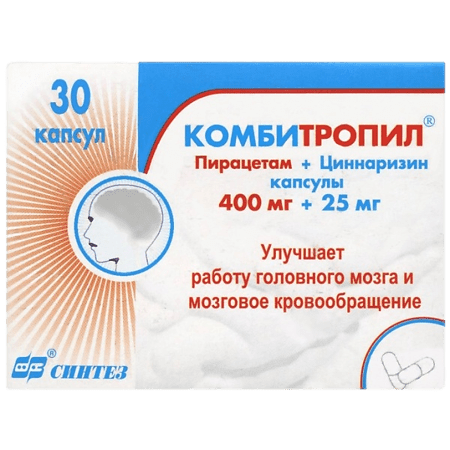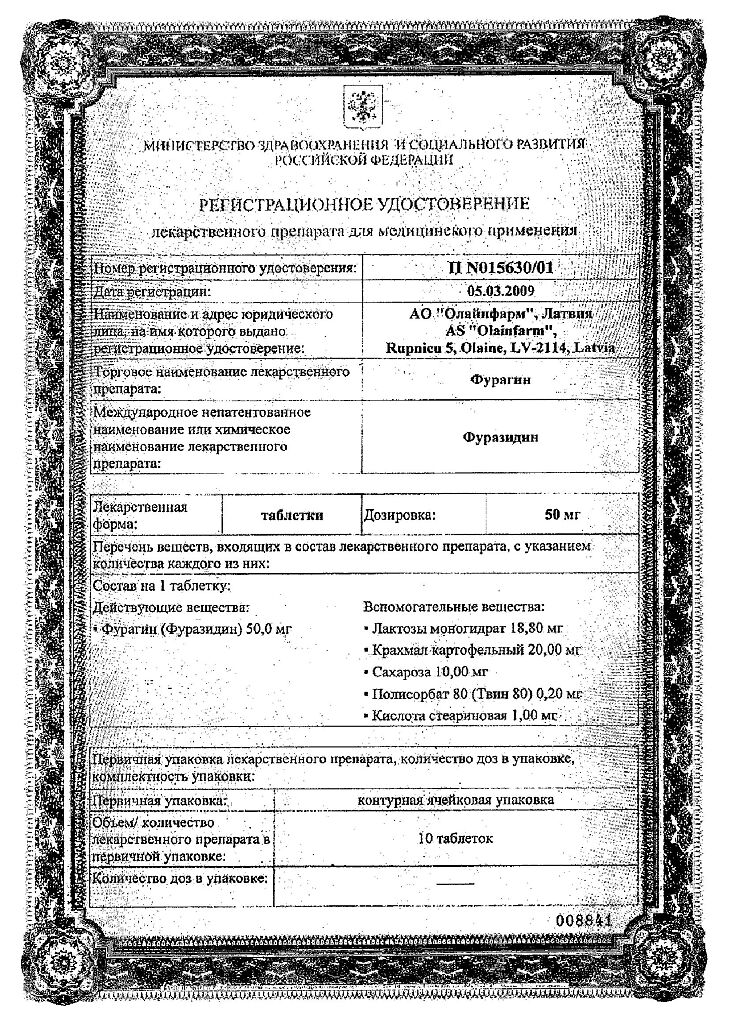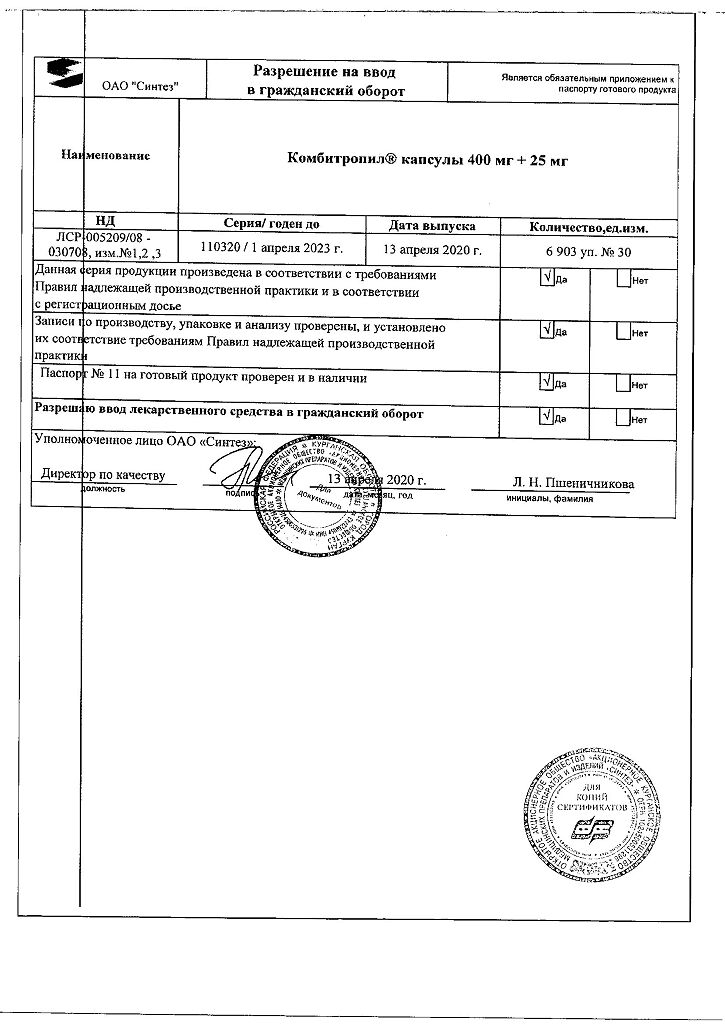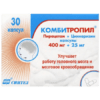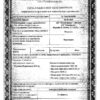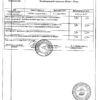No products in the cart.
Combitropil, capsules, 30 pcs.
€6.81 €5.96
Description
Combitropil is a combined medicine with pronounced antihypoxic, nootropic and vasodilator effect.
The two components mutually potentiate their own antihypoxic effect and have a vasodilator effect. The combination drug also contributes to a significant increase in blood flow in the brain. The toxicity of the combination does not exceed the toxicity of the individual components of the drug.
Piracetam is a nootropic drug. It has a positive effect on metabolic processes in the brain: it increases the concentration of ATP in the brain tissue, increases the synthesis of RNA and phospholipids, stimulates glycolytic processes and increases the utilization of glucose.
Improves integrative activity of the brain, promotes memory consolidation, facilitates learning.
It changes the speed of excitation in the brain, improves microcirculation, without a vasodilator effect, inhibits the aggregation of activated thrombocytes. It has a protective effect in brain injuries caused by hypoxia, intoxication and electroshock; it increases alpha and beta activity, decreases delta activity on EEG, reduces severity of vestibular nystagmus.
It improves inter-neuronal transmission and synaptic conduction in the neocortical structures, increases mental performance, improves cerebral blood flow. The effect develops gradually.
It has practically no sedative and psychostimulant effect.
Cinnarizine is a selective blocker of slow calcium channels, reduces the entry of Ca2+ into cells and reduces its content in the plasma membrane depot, reduces the tone of the arteriolar smooth muscle, reduces their response to biogenic vasoconstrictors (epinephrine, norepinephrine, dopamine, angiotensin, vasopressin, serotonin).
It has a vasodilator effect (especially on brain vessels, increasing the antihypoxic effect of piracetam) without having a significant effect on blood pressure. It has moderate antihistamine activity, reduces the excitability of the vestibular apparatus, reduces the tone of the sympathetic nervous system. In patients with impaired peripheral circulation improves blood supply to organs and tissues (including myocardium), increases postischemic vasodilation. Increases the elasticity of red blood cell membranes, their ability to deform, reduces blood viscosity.
Pharmacokinetics
The combined drug is quickly and completely absorbed in the gastrointestinal tract. Bioavailability of piracetam is 95%. Therapeutic effect is manifested in 1-6 hours. Maximal level of cinnarizine in plasma is observed after 1-4 hours, piracetam – after 2-6 hours.
The metabolism of cinnarizine occurs entirely in the liver (by dealkylation). 60% of cinnarizine in unchanged form is excreted with feces, the rest is excreted with urine as metabolites in about 5 hours. Maximal level of cinnarizine in 1-4 hours is observed not only in blood, but also in liver, kidneys, heart, lungs, spleen and brain. It is 91% bound to plasma proteins.
Piracetam penetrates through the blood-brain barrier and accumulates in the brain tissue 1-4 hours after oral administration. Excretion from cerebrospinal fluid is significantly slower than from other tissues. It is practically not metabolized. Elimination half-life is 4.5 hours (7.7 hours – from brain). Excreted by the kidneys – 2/3 unchanged within 30 hours.
Indications
Indications
cerebrovascular accidents: with atherosclerosis of cerebral vessels, ischemic stroke, after-treatment period after hemorrhagic stroke, after traumatic brain injury;
encephalopathy of various origins;
comatose and subcomatose states after intoxication and brain injury;
diseases of the central nervous system, accompanied by a decrease in intellectual and mental functions;
labyrinthopathy of various origins: dizziness, tinnitus, nystagmus, nausea and vomiting; Meniere’s syndrome;
depression, psychoorganic syndrome with a predominance of signs of asthenia and adynamia, asthenia of psychogenic origin;
prevention of migraine and kinetosis;
impairment of memory, mental function and concentration;
delayed intellectual development in children.
Pharmacological effect
Pharmacological effect
Combitropil is a combination drug with a pronounced antihypoxic, nootropic and vasodilating effect.
Both components mutually potentiate their own antihypoxic effect and have a vasodilating effect. The combination drug also helps to significantly increase blood flow in the brain. The toxicity of the combination does not exceed the toxicity of the individual components of the drug.
Piracetam is a nootropic drug. It has a positive effect on the metabolic processes of the brain: it increases the concentration of ATP in brain tissue, enhances the synthesis of RNA and phospholipids, stimulates glycolytic processes, and enhances glucose utilization.
Improves the integrative activity of the brain, promotes memory consolidation, and facilitates the learning process.
Changes the speed of propagation of excitation in the brain, improves microcirculation without having a vasodilating effect, and suppresses the aggregation of activated platelets. Has a protective effect against brain damage caused by hypoxia, intoxication, and electric shock; enhances alpha and beta activity, reduces delta activity on the EEG, reduces the severity of vestibular nystagmus.
Improves interneuronal transmission and synaptic conduction in neocortical structures, increases mental performance, and improves cerebral blood flow. The effect develops gradually.
It has virtually no sedative or psychostimulating effects.
Cinnarizine is a selective blocker of slow calcium channels, reduces the entry of Ca2+ into cells and reduces its content in the plasma membrane depot, reduces the tone of the smooth muscles of arterioles, reduces their response to biogenic vasoconstrictors (epinephrine, norepinephrine, dopamine, angiotensin, vasopressin, serotonin).
It has a vasodilating effect (especially in relation to cerebral vessels, enhancing the antihypoxic effect of piracetam), without having a significant effect on blood pressure. It exhibits moderate antihistamine activity, reduces the excitability of the vestibular apparatus, and lowers the tone of the sympathetic nervous system. In patients with impaired peripheral circulation, it improves blood supply to organs and tissues (including the myocardium), and enhances post-ischemic vasodilation. Increases the elasticity of red blood cell membranes, their ability to deform, and reduces blood viscosity.
Pharmacokinetics
The combined drug is quickly and completely absorbed from the gastrointestinal tract. Bioavailability of piracetam is 95%. The therapeutic effect appears after 1-6 hours. The maximum level of cinnarizine in plasma is observed after 1-4 hours, piracetam – after 2-6 hours.
The metabolism of cinnarizine occurs entirely in the liver (by dealkylation). 60% of cinnarizine unchanged is excreted in the feces, the rest in the urine in the form of metabolites in about 5 hours. The maximum level of cinnarizine after 1-4 hours is noted not only in the blood, but also in the liver, kidneys, heart, lungs, spleen and brain. 91% bound to plasma proteins.
Piracetam penetrates the blood-brain barrier and accumulates in brain tissue 1-4 hours after ingestion. It is eliminated from the cerebrospinal fluid much more slowly than from other tissues. Practically not metabolized. The half-life is 4.5 hours (7.7 hours from the brain). Excreted by the kidneys – 2/3 unchanged within 30 hours.
Special instructions
Special instructions
During treatment, monitoring of liver function is necessary.
At the beginning of treatment, the patient should refrain from drinking alcohol.
Due to the content of cinnarizine, the drug may cause a positive reaction in athletes during a doping test.
The drug should be prescribed with caution in cases of increased intraocular pressure.
During the treatment period, care must be taken when driving a car and engaging in activities that require increased concentration and speed of psychomotor reactions.
Active ingredient
Active ingredient
Piracetam, Cinnarizine
Composition
Composition
active ingredients:
cinnarizine – 25 mg,
piracetam – 400 mg.
excipients:
microcrystalline cellulose,
lactose (milk sugar),
magnesium stearate,
talc.
gelatin capsule composition:
titanium dioxide, methyl parahydroxybenzoate, propyl parahydroxybenzoate, acetic acid, gelatin.
Contraindications
Contraindications
increased sensitivity;
severe liver failure;
severe renal failure;
parkinsonism;
pregnancy;
lactation period;
children under 5 years of age.
With caution:
Parkinson’s disease; renal and/or liver failure.
Side Effects
Side Effects
Irritability,
sleep disorders,
dyspepsia,
headache,
epigastric pain,
dry mouth,
allergic reactions (skin rash),
tremor of the limbs.
Interaction
Interaction
Combitropil enhances the effects of drugs that depress the central nervous system, ethanol, as well as nootropic and antihypertensive drugs.
Improves tolerability of antipsychotic drugs (neuroleptics) and tricyclic antidepressants.
Vasodilating drugs enhance the effect of Combitropil.
Storage conditions
Storage conditions
In a dry place, protected from light, at a temperature not exceeding 25 ° C. Keep out of the reach of children.
Shelf life
Shelf life
2 years.
Manufacturer
Manufacturer
Sintez, Russia
Additional information
| Shelf life | 2 years. |
|---|---|
| Conditions of storage | Store in a dry, light-protected place at a temperature not exceeding 25 °С. Keep out of reach of children. |
| Manufacturer | Sintez OAO, Russia |
| Medication form | capsules |
| Brand | Sintez OAO |
Related products
Buy Combitropil, capsules, 30 pcs. with delivery to USA, UK, Europe and over 120 other countries.

